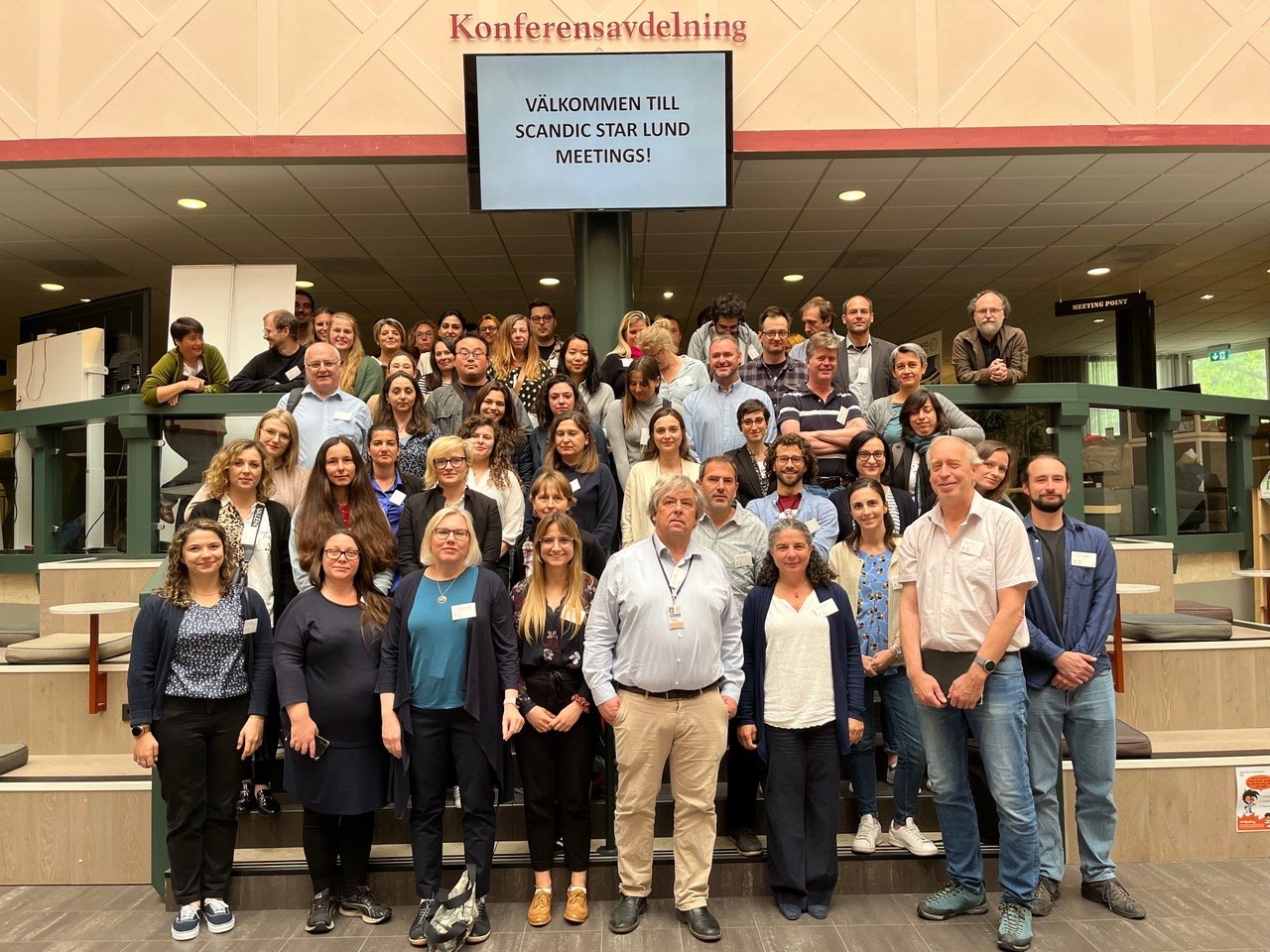The Lipid Bilayers at ESS conference: expanding the scope of biological membrane research
Participants at the BESS conference in Lund, Sweden.
With more than 85 people attending the recent Lipid Bilayers at ESS conference, Professor Tommy Nylander concludes that the event was a great success. It was organised as part of a series of conferences gathering researchers globally who work on biological membranes, biophysics and modelling.
The conference was also the very last event organised by the Dynamics theme.
He reflects that the event has expanded in scope since it was first organised by ISIS, Rutherford Appleton Laboratory, Oxfordshire, UK, in 2009.
– What started as a neutron focused event has now grown into a broader approach where we highlight both modelling and complementary techniques. I think this is great since it opens up the network, and the research on biological membranes to more people, says Tommy Nylander, professor at Physical Chemistry at Lund University, and LINXS fellow.
Broad programme on science, tools and methods
The conference included sessions on biological membranes and functions, membrane structure and self-assembly, membrane dynamics, structural analysis of membranes and lateral and non-planar membrane structures. It also highlighted talks on the role of membranes in health and disease, membrane protein interactions, and application of membranes. Methods and tools were also discussed, such as the need to combine modelling with experiments, how to make full use of the advantage of neutron techniques , by deuteration of lipids, and ways to reduce the background in different sample environments.
In three years, the network will meet again. Tommy Nylander hopes to see an even broader programme at that event. Because more research is absolutely crucial to progress fundamental understanding on how structural biological membranes function.
Research gaps need to addressed
Some of the research gaps he would like to see addressed in the coming years, covers areas such as structure/ function relationships, including how to match model systems to real membranes, how to tackle more scares but crucial lipids, the role of curved membranes and responses to physiological environments, for example enzyme action on biological membrane, and interaction with other components.
Tommy Nylander, professor at Physical Chemistry at Lund University, and LINXS fellow. Photo: Kennet Ruona.
More fundamental knowledge will continue to inform the development of a broad range of applications, from the formulation of more effective vaccines, to the development of new antibiotics medicines.
– For me personally, these two areas are the most interesting. If we know more about the structure of biological membranes, we can for example develop how we design the capsule which is used to deliver MRNA vaccine to the body. Many modern vaccine formulations are lipid based, so the opportunities here are endless.
– We also need better understanding of the structure of some bacterial membranes to be able to ascertain why some bacteria tribes develop a resistance to antibiotics. Worldwide, the need for a new chemical compound is really urgent, he concludes.
About the Dynamics theme
The theme "dynamics" addressed time dependent phenomena, such as biological processes, motion of biomolecules and colloids, or transport processes in hard matter, utilizing the accessible time and length scales with neutrons and X-rays, and the coherent properties of MAX IV. Systems and processes studied included equilibrium as well as non-equilibrium phenomena, reversible and irreversible processes, order-disorder transitions, dynamics on different length and time scales, as well as transient states that could for example be studied with pump-probe experiments.


